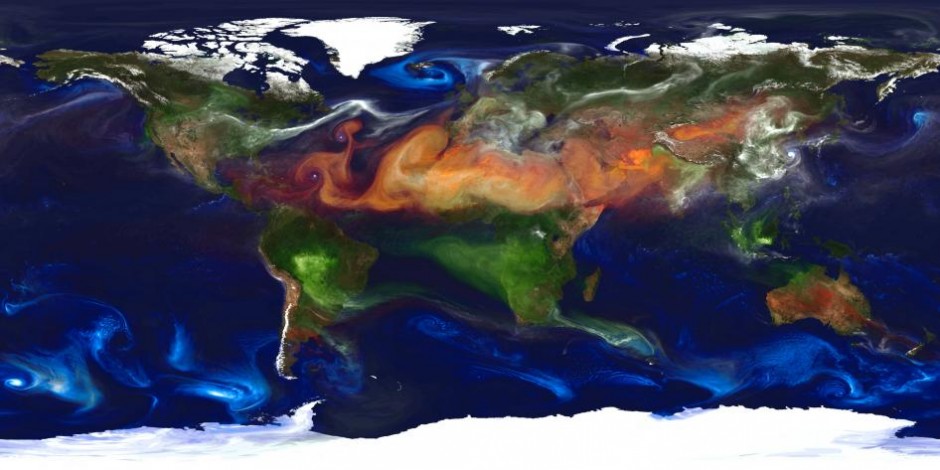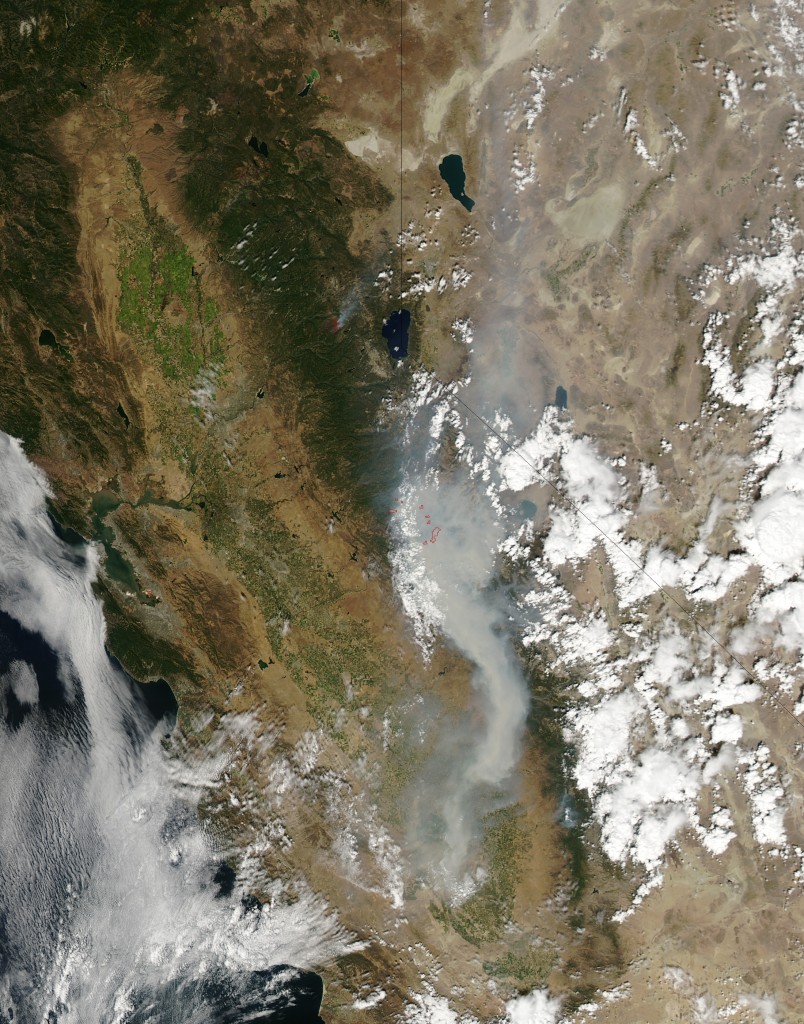One of the most fundamental aspects of aerosols that we are continually striving to understand is how they are actually born. One pathway that aerosol particles can take is a process known as “nucleation“. This nucleation process is where new particles are formed by gaseous molecules getting together and deciding that they’ve had enough of the gas-phase and would prefer to be tiny aerosol particles instead. Aerosol particles are pretty small at the best of times, but these are really tiny; the initial particles are around 100,000 times smaller than the width of a human hair!
Many of the important steps in the birth of these particles occur when they are less than 2-nanometres in diameter. If the conditions are suitable, these newly formed particles can then grow to larger sizes (50-100 nanometres). It is at this point that these particles get interesting from a climate point of view as they can serve as the seeds for clouds. Newly formed particles from nucleation represent a large fraction of the building blocks of clouds (known as cloud condensation nuclei) – potentially around half of the cloud condensation nuclei in our atmosphere come from nucleation.
Nucleation in our atmosphere has been observed regularly across the globe, ranging from remote forests to heavily-populated cities. However, our understanding of the nucleation recipe has been limited, as it proved extremely difficult to actually measure the first steps of nucleation. This is where a new study in Nature steps in.
The cleanest box in the world
The study reports on the latest series of experiments using the ‘cleanest box in the world‘ at CERN for a project known as CLOUD. The experiments take place in a 26 m3 stainless steel box (or chamber if you prefer the fancy terminology), that has very precise controls for temperature and delivery of whatever cocktail of gases the scientists wish to introduce. The chamber is able to simulate cosmic rays using the CERN Proton Synchrotron, a 628 metre long particle accelerator.
The idea with chambers such as this is to recreate conditions similar to the real atmosphere in the laboratory, where things can be controlled more precisely and annoyances like the weather don’t get in the way. These sorts of experiments are ideal for improving our understanding of particular mechanisms, such as how are aerosol particles born?

View inside the CLOUD chamber. Image courtesy of CERN.
For many years, it was known that the nucleation recipe required the presence of sulphuric acid in order to occur. However, experiments in the laboratory did not agree with our observations in the real atmosphere, while there were also theoretical limitations on nucleation involving only sulphuric acid. CLOUD has been able to show how important other molecules are.
The first major result from the project was published in Nature in 2011 and demonstrated that ammonia was a crucial ingredient for nucleation. The most recent Nature paper presented results showing that a cousin of ammonia, known as amines, promotes even more nucleation. Both ammonia and amines are produced predominantly by agricultural activities, such as fertiliser application and animal husbandry. It turns out that cows are one of the keys to nucleation!
A crucial finding of the new study is that only a relatively small addition of amines to the nucleation recipe is required to close the gap between laboratory and atmospheric measurements. Adding a dash of amines to the mix increases the rate of nucleation by more than a 1,000 compared to the previous results for the ammonia system. The level of amines required is also comparable to typical values measured in the atmosphere, although relatively few measurements exist at present. Nonetheless, it suggests that amines play an important role in nucleation in our atmosphere.
Intergalactic planetary
Adding amines to the mix gets the laboratory results into the same ballpark as the atmospheric observations but the results suggest that some ingredients are still missing…
CERN is able to simulate the addition of ions from Galactic Cosmic Rays to the mixture, with ions known to enhance nucleation. The work done at CLOUD so far suggests that these ions play a limited role in the lower part of the atmosphere. The studies have stressed though that the impact of ions on other systems needs to be studied and that some remote areas in the mid-troposphere may be more susceptible to ion-induced nucleation.
The major remaining candidate is organic compounds, which are known to play a role in nucleation based on atmospheric observations. We know that organic compounds are a major player for aerosols across the globe and they are often the dominant ingredient. Much of the more recent work from CLOUD that has been presented at scientific conferences has focused on these organic compounds. The indications are that they play a crucial role in both the initial particle formation and their growth.
The growth of these particles is crucial for their potential climate impact – if they don’t grow, they won’t become the seeds for clouds. CLOUD has been doing a lot of work on these “growth” experiments, with plans to connect the whole process to actual clouds (rather than tortured acronyms).
The CLOUD experiments have thus far hugely improved our understanding of the nucleation recipe and there will likely be further important discoveries. The climate implications of these new mechanisms will come under great scrutiny in the future. In terms of the experiments themselves, probably the most important aspect is that the chamber is incredibly clean – given CERN’s association with the so-called “God-particle“, it seems that cleanliness really is next to Godliness.




